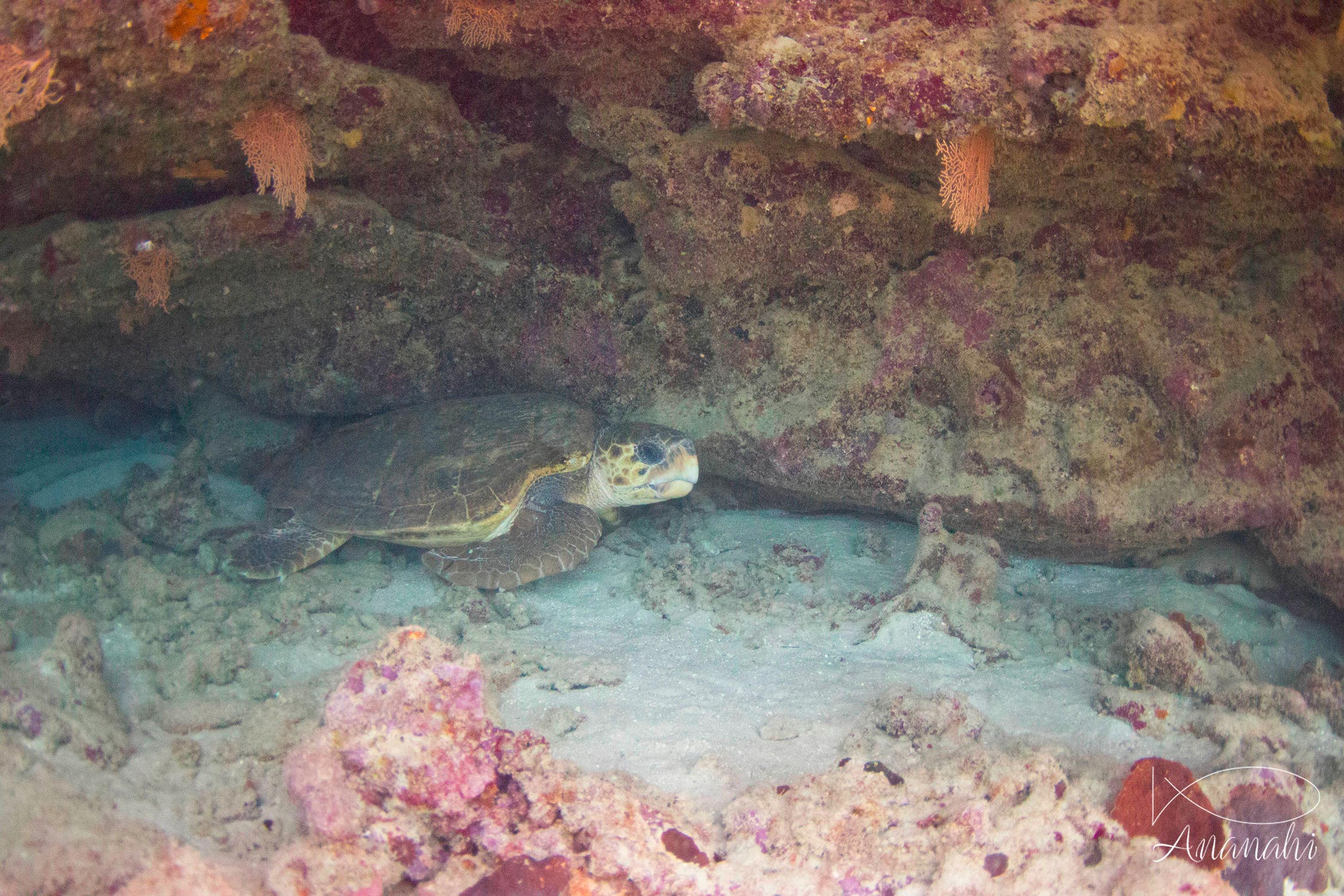
Scientific name: Caretta caretta
Size: Up to 4 foot
Color: Yellow to brown skin, reddish brown carapace
Distinguishing feature: Big head and stocky body. 4 prefontal scales, often a fifth in their center. The nuchal plate touches the first lateral plates.
Where did we see it: Mayotte

Scientific name: Caretta caretta
Size: Up to 4 foot
Color: Yellow to brown skin, reddish brown carapace
Distinguishing feature: Big head and stocky body. 4 prefontal scales, often a fifth in their center. The nuchal plate touches the first lateral plates.
Where did we see it: Mayotte
Its range of distribution is very wide, it is the turtle which has the largest area of geography.
Its dives usually last between 15 and 30 minutes, even if it can remain submerged for 4 hours!
This turtle has a life span of 46 to 67 years and reaches its sexual majority between 17 and 33 years. After about 4 egg-laying, the turtle quiesces (does not lay eggs) for 2 to 3 years, making it a species that does not reproduce quickly. Especially since children are not often really lucky...
When adult, the loggerhead turtle can eat several hundred jellyfish a day. This is a problem because it easily confuses this diet with the plastic bags present in the ocean.
The tiger shark has slender marks similars to the lines of tigers, hence its name.
When it is juvenile, these marks are round and not vertical. They change when it grows.
Some sharks can stay motionless on the sand (white tips reef sharks, nurse sharks, etc.).
These sharks don't have to swim to bring oxygen to their gills like other sharks (grey, hammerheads tc.)
Turtles are in economy mode when they are sleeping. If they are woken during night, they may not have enough air to return to surface.
So, please be careful during night dives!